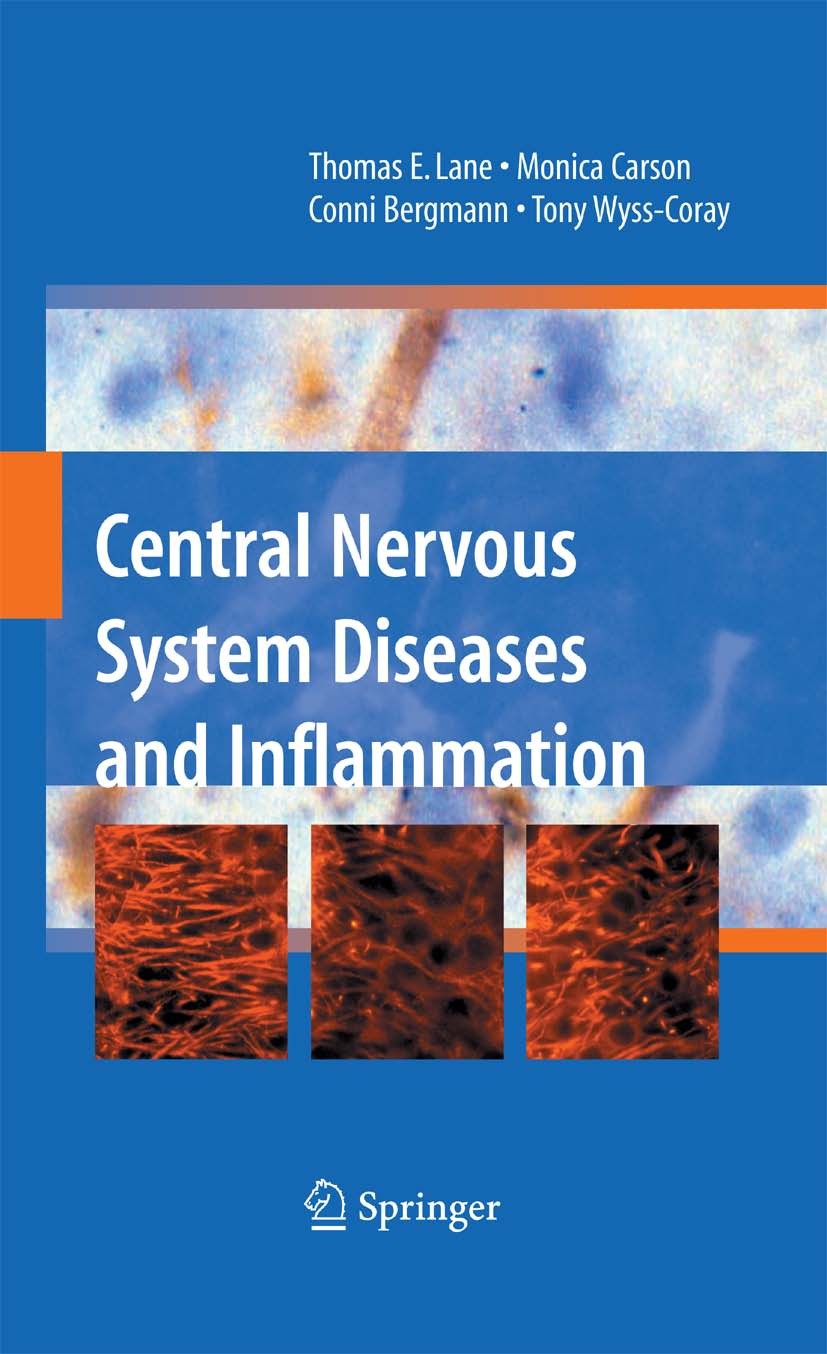| 书目名称 | Central Nervous System Diseases and Inflammation |
| 编辑 | Thomas E. Lane,Monica Carson,Tony Wyss-Coray |
| 视频video | http://file.papertrans.cn/224/223189/223189.mp4 |
| 概述 | Editors and contributors are top names in the field.Topical approach and organization of the volume provides a succinct overview of a specific subject relating to interrelated topics pertaining to neu |
| 图书封面 |  |
| 描述 | Up until approximately 20 years ago, the idea that the central nervous system (CNS) and components of the immune system were dynamically interactive was considered impossible (or at least highly unlikely) as the CNS was judged an immunosuppressive environment based upon experimental evidence highlighting the survival of tissue grafts within the brain. Additional evidence supporting this viewpoint included (i) the presence of the blood–brain barrier (BBB) which p- vides a physical and physiological obstruction that is difficult for cells and mac- molecules to cross, (ii) the relative absence of MHC class I and II expression on CNS cells like astrocytes and neurons, and (iii) lack of abundant antigen presenting cells (APC) which are required for the generation of an adaptive immune response. However, in spite of these obstacles, it is now well-accepted that the CNS is r- tinely subject to immune surveillance under both normal as well as diseased con- tions. Indeed, activated cells of the immune system such as T and B lymphocytes and monocyte/macrophages readily infiltrate and accumulate within the CNS f- lowing microbial infection, injury, or upon development of autoimmune responses |
| 出版日期 | Book 2008 |
| 关键词 | Antigen; Chemokine; Nervous System; biochemistry; microbiology; neurology; neurotoxicity; protein; virology |
| 版次 | 1 |
| doi | https://doi.org/10.1007/978-0-387-73894-9 |
| isbn_softcover | 978-1-4419-4480-1 |
| isbn_ebook | 978-0-387-73894-9 |
| copyright | Springer-Verlag US 2008 |
 |Archiver|手机版|小黑屋|
派博传思国际
( 京公网安备110108008328)
GMT+8, 2025-11-14 11:12
|Archiver|手机版|小黑屋|
派博传思国际
( 京公网安备110108008328)
GMT+8, 2025-11-14 11:12


